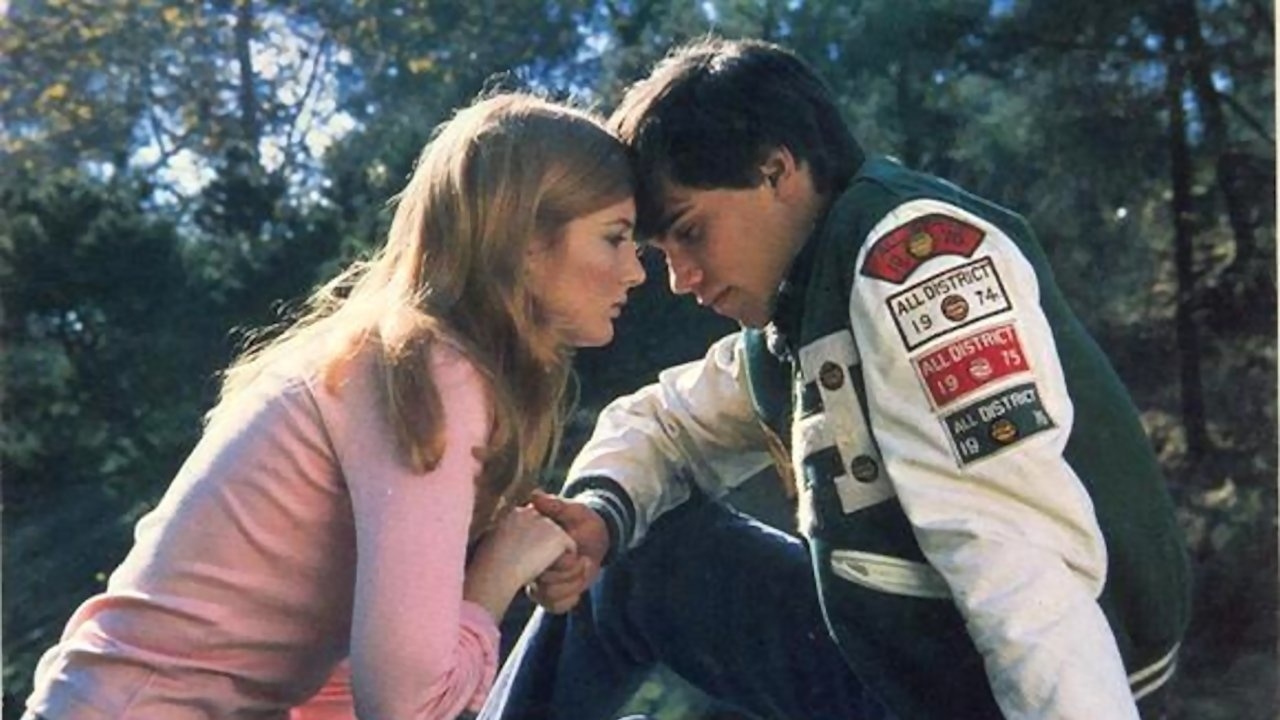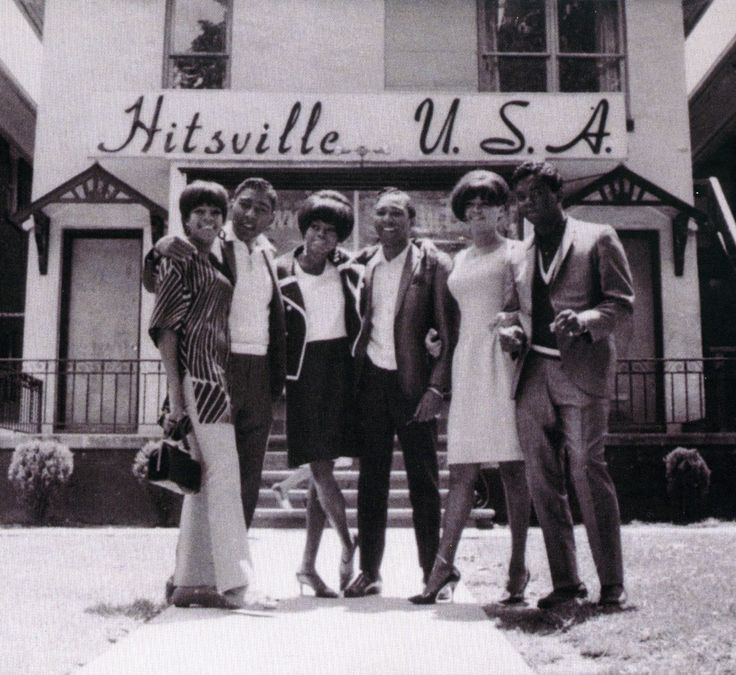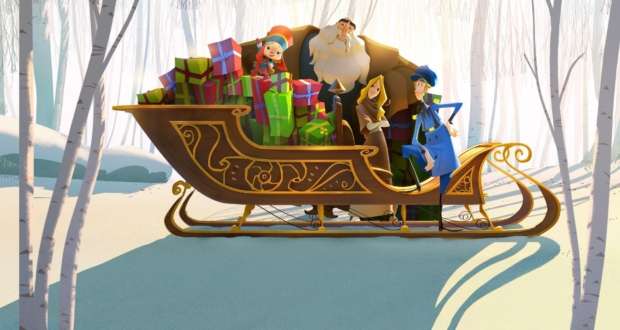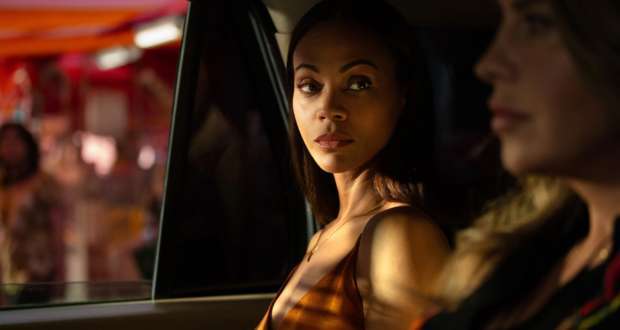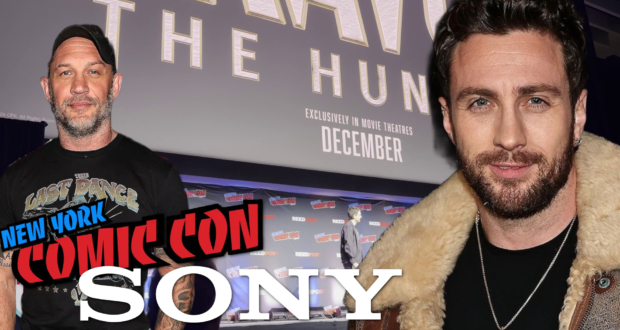We all have families. Most of us have taken vacations with our kin. And on those occasions many of us took home movies or videos. But have you ever taken those recordings and made a commercial short film out of them? Me neither. But Canadian Ross Munro did. He calls it “European Tour ’73”. I call it fascinating.
I got a chance to talk with the filmmaker about his unique project, a true labor of love for a son, a grandson and a sibling.
What a fresh idea. Make a clever and compelling film from Super 8 camera movies procured during a 1973 family trip to Europe. Take us through the process of bringing this benchmark life event to the arena of commercial cinema, starting with the inspiration.
My wife Maria (who is also my Producer) and I had just finished our film festival run for our previous documentary short “Broken Palace”- about the tragic demise of historic movie theatres- and we were in search of a new concept. For some reason I remembered that I was currently sitting on a cache of Super 8mm film reels taken during a memorable family trip by my family way back in the summer of 1973.
By some fortunate bit of kismet I had the idea that somehow that footage could be the core of- I hoped!- an interesting new documentary. Even though I have numerous siblings, for some reason our family treasure of film reels were with me and indeed they held a lot of amazing memories as my father bought a Super 8 camera just before taking myself and my four brothers (all of us young children) to Europe for a six-week trip which ended up being the life-changing event that forms the basis of “European Tour ‘73”.
I originally thought about making the film into a feature length doc but, after a while, decided that a short film would make for a more quick-paced whirlwind of a movie which would more accurately characterize the craziness of the whole trip itself as we actually barnstormed around a ton of countries while my parents and us five kids were jammed into a tiny VW camper where we had to also somehow all sleep and eat and survive together.
Settling on the idea of an accelerated-paced, shorter film, I set out combing through the footage to see what kind of connective story tissue I could tease out of it- eventually coming up with trying to comically and sweetly recreate the manic-paced geographical itinerary of the trip itself. I then came upon the idea of adding more flavor and setting by creating- early in the film- a sequence that sets the stage for audiences of just what 1973 was like. A bit of a fun montage that is a foreshadowing of how the past can also feel very connected to the present.
Then Maria and I delved into what was the most challenging aspect of the film which was all the research that was involved- both about my family and especially my father and grandfather as, without giving away too much re: the film’s journey, that was a crucial aspect of tying the whole film together and bringing the family trip full circle.
Once we had everything researched and all the noteworthy Super 8mm film picked out to be used in the film, we brought in our amazing film editor Patricia “Pat” Maldonado who pretty well set up her editing bay in our apartment as we all worked at a feverish pace on putting the movie together. At any time Maria would be on her computer in one room working on the movie’s amazing graphics and photographs, while I’d be holed up in the bedroom recording the next piece of narration into my iPhone and then we’d run over to Patricia’s editing station and hand stuff over to her which she expertly pieced together. Then we’d run back to our rooms and rinse and repeat. It was a unique process doing it this way but I think the film fared better because we were all able to be in sync and harmony and, even though it was a little stressful at times due to the frenetic pace, we all felt like we were in a creative fever dream with all our creative senses fired up together as one (speaking of “fired up”, sometimes Patricia had to place layers of ice bags under her computer due to overheating…).
The film now finished editing and coming in at around 15 minutes, I went off to compose the movie’s final closing piece of instrumental music on the guitar which I ended up calling “Flying Home” and, hopefully, sums up the film’s emotional tone. I know for Maria and I we easily put more blood, sweat and tears (hmm- sounds like a good name for a band…) into this short film then we probably did making our feature “A Legacy of Whining”- and that movie was a herculean effort as well!
With “European Tour ‘73” now almost completed it’s post production, we had only to bring it to our amazing Leo Award winning sound designer Gregorio Gomez who created the rich sound palette that really elevates the film- especially in the original animated sequences (big props to Vancouver illustrator Dylan Moore for these very colorful and evocative animations by the way!).
So there you have it- the nearly 5 year “overnight success” that took this film from the early stages of an idea to the final finished film that is “European Tour ‘73”.
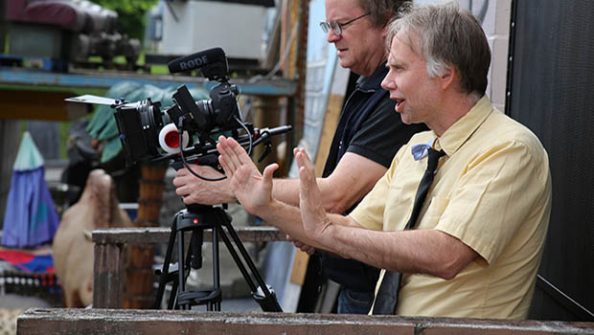
Filmmaker Ross Munro (right)
Your parents both have immigrant backgrounds. Clearly you are deeply proud of their French and British heritages. I can relate. My dad is Norwegian-American, arriving in the States for the first time as a mere four-year-old. Share with us your feelings about this emotional experience in Europe nearly a half-century ago, both as a nine-year-old boy and as a guy a bit older today.
I think about this a lot. Working on “European Tour ‘73” really forced me to confront my memories and perceptions to reconstruct my thoughts of what I felt as a 9-year old when I went on that trip to Europe back in 1973. At the time I really remember being heartbroken at first when the trip was announced by my parents that we’d be spending six weeks during the summer away in that mystical, faraway land known as Europe (at least to a kid growing up in Winnipeg)- the reason for my impending doom was that, as a movie rat, I’d be forced to miss almost the entire summer of Hollywood blockbusters. This- looking back- was a fate worse than death for my movie-addled brain. Eventually while being on the trip in Europe, I came to accept this grim realization of not being able to frequent my beloved childhood movie theatres (which are all now gone by the way!) but remember one night of bliss when we visited York, England, and my parents dropped me and my brothers off at the local cinema to enjoy a double bill of “The Train Robbers” (John Wayne! Ann-Margret!!) and “The Spy Who Came to Dinner” (Ryan O’Neal! Jackie Bisset!!!). I remember also being excited visiting the Canadian Embassy in Paris so I could check out the Winnipeg newspaper’s movie section just to torture myself even further to see what I was missing.
And, of course, I didn’t really clue in as to the trip’s important meaning to my father and the significance of why he was having us visit the many war memorials and historical sites associated with WW2. My visit to the concentration camp in Dachau, West Germany, and the profound historical meaning of being there never became significant to me until I became older into my early adulthood.
Looking at the trip today I sometimes can get emotional when I realize how passionate my parents were in pulling off the enormous feat of taking five small kids zipping around Europe for six weeks. As both of my parents are no longer alive, I felt like all the research I did in reconstructing their lives and the meaning of the trip really impacted me enormously and brought them back- if only cinematically in my mind- to life for me in a tangible and gratifying way. Maria and I put a lot of pressure on ourselves looking back at the making of this labor of love as we wanted to tell my family story in a way that honored my parents and reflected the love and dedication they gifted us by pulling off this life-changing trip to Europe back in 1973. We have now played some film festivals and we feel so gratified and blessed that audiences seem to be moved by the film and find in it their own family stories reflected back to them. That’s a great feeling!
One of the points made in “European Tour ’73” is that the family goal was to get by providing for mom, dad and five young boys on a less than robust five dollars a day. I remember when my own parents went to Europe (however, without me, my brother and sister in tow) they each read the then best-selling guide, “Europe on 5 Dollars a Day”, before departing overseas. I never asked my folks if they stuck to this meager budget. Still, their chances had a heckuva lot better shot at succeeding than did your crew. Do you recall how you guys fared in this frugal quest? What did meals for seven, including a quintet of growing and ravenous school lads, look like?
To answer your question in as few words as possible: a lot of Wonder Bread and peanut butter. But, seriously, you are right in that it was definitely a struggle to keep all of us fed and happy on such a tight budget. The responsibility definitely fell on my mom who actually had to make the most out of things- we pretty well did eat a lot of sandwiches in our numerous mealtimes huddled inside the crowded camper van’s sparse kitchen area. We would also get large bottles of milk as our main drink. Sometimes- when in Rome (we didn’t actually visit Rome!) we were able to eat the local take out food of choice. For instance, when we were in the UK we frequently would order out fish and chips, steak and kidney pies, etc. My dad even picked a bunch of clams from the English Channel at Dunkirk when the tide was out and we cooked those up to enjoy a rare handpicked French meal. However, as noted in our film, I still haven’t got over the profound disappointment of not sampling any waffles while visiting Belgium…
We also saved a lot of money by just parking our camper overnight in random farmer’s fields- many of whose owners, upon seeing the Canadian flag on our van’s window, would invite us for breakfast or offer to take us sightseeing later in the day. At the time it was only a mere few decades since the liberation of Europe by the Allies in WW2 and Canadians definitely were beloved by the populace there. Plus, as a bonus, my mom really impressed the French citizens in France with her consummate command of the French language as she was born and raised in the French part of Winnipeg known as St. Boniface. This was a life saver throughout the many French speaking parts of Europe we traversed- and I secretly harbored the hope that while scouring the French countryside my mom would put her prodigious translation abilities to work for me if I ever ran into Bridget Bardot anywhere (after I fell in love with her after seeing her in the movie “The Legend of Frenchie King” the year before…).
I just learned from my 11-year-old son that Canada actually declared war on Japan before the United States did in the wake of the devastating attack on Pearl Harbor in 1941. Your film chronicles in quite gripping fashion your dad’s father serving with Canadian forces on the European front in World War II. Have you ever spoken with your grandpa about his experience as a combat soldier, Ross?
Of course it’s the bitterest of ironies that when I actually had the opportunity to ask my grandpa about his wartime experiences I never was motivated to know about this amazing and seminal part of his life. And it wasn’t until a few years after my dad died that we embarked on this film- so I was doubly disappointed now that I couldn’t even learn about this through talking to my dad. I know that my grandpa- like many soldiers returning from combat zones- didn’t talk about his experiences. He was a very stoic person regarding talking about any aspect of his feelings- although he had a very loving presence and was always a great listener and a very warm, friendly person to us all and was quite a pillar in his small town. A humble farmer and ice fisherman and I know my dad loved him dearly and was quite close to him.
We were very fortunate while researching my grandpa’s WW2 combat records to be able, with the help of a Canadian military researcher, to trace as accurate as possible the entire trajectory of my grandpa’s European war experiences. Even down to the battle in France where he was eventually wounded (but later to recover at a military hospital in England).
Also, we were grateful that my cousin Myles was able to provide us with the actual Canadian regimental military jacket that my grandpa wore in the war and returned wearing before, all these years later, being passed down to my cousin. That’s the actual jacket being worn in the scene in “European Tour ‘73” that recreates the fantasy of my father imagining my grandpa walking through the French wheat field during a battle. Just holding that jacket and being blessed to feature it in our movie made us all feel a little closer to my grandpa and made the elusive journey of capturing the spirit and emotion of our family history in “European Tour ‘73” just a little more real and meaningful.
Munro and “European Tour ’73” are currently garnering positive feedback on the COVID-19-modified film festival circuit.
I invite you to enjoy all of my film reviews as “The Quick Flick Critic”, continually updated at https://thequickflickcritic.blogspot.com/2020/10/new-short-story-collection-now-on.html
Filmmaker Ross Munro culls Home Movies for a Nostalgic "European Tour '73" (2020)
-
Cinematography - 6/10
6/10
-
Plot/Screenplay - 6.5/10
6.5/10
-
Setting/Theme - 7/10
7/10
Overall
User Review
( votes)Filmmaker Ross Munro culls Home Movies for a Nostalgic "European Tour '73" (2020)
What a fresh idea. Make a clever and compelling film from Super 8 camera movies procured during a 1973 family trip to Europe.


